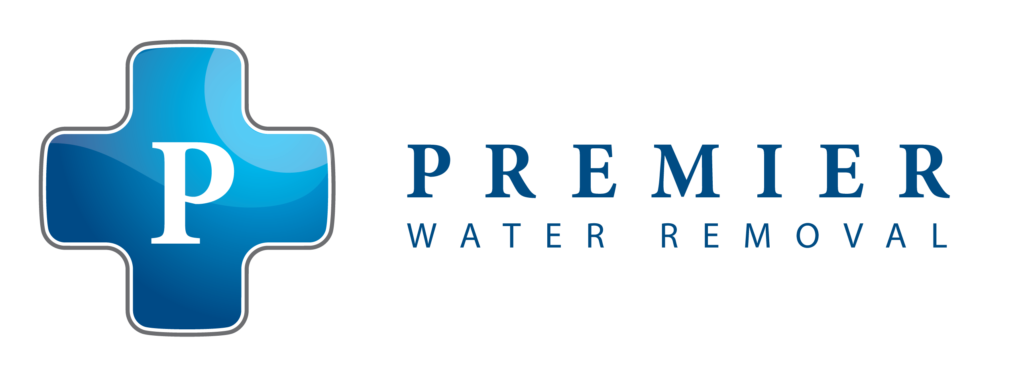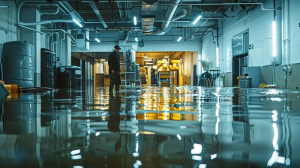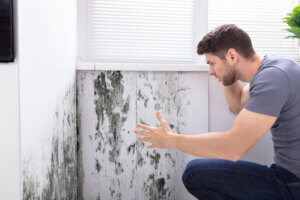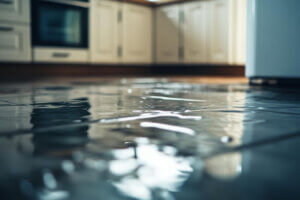Water damage can be a homeowner’s nightmare, and one of the biggest concerns that follow is the potential for mold growth. Mold thrives in damp conditions, so taking immediate and effective steps to dry out your space is crucial. If left unchecked, mold can cause health issues and further structural damage to your home.
Acting quickly after water damage is essential. The first thing you need to do is to remove any standing water and begin drying the affected areas. This reduces the chances of mold setting in. The longer water sits, the more damage it can do, so speed is of the essence.
Understanding how to properly dry out your home, use mold-resistant products, and adopt long-term prevention strategies can save you time, money, and stress in the future. Prevention is better than cure, and following the right steps ensures mold does not become a problem after water damage. Taking these measures will help protect your health and your home’s integrity.
Immediate Steps to Take After Water Damage
When water damage occurs, taking immediate action is crucial. The first thing you should do is to ensure your safety. If the flooding is severe, it might be necessary to turn off the electricity for safety reasons. Once the area is safe, start by removing any standing water. You can use buckets, mops, or a wet-dry vacuum to get rid of the excess water.
After removing the standing water, it’s important to move any wet items out of the affected area. This includes furniture, rugs, and other personal belongings. Doing this helps prevent additional damage and makes it easier to dry the area. Be sure to check underneath carpets and rugs, as water can easily become trapped there.
Next, dispose of any items that cannot be salvaged, such as soaked paper products or heavily damaged textiles. Removing these items will prevent mold and mildew from growing on them. Before throwing anything away, make sure to document and photograph the damage for insurance purposes.
Swift action during these initial steps can significantly reduce the risk of mold growth and minimize overall damage.
Effective Drying Techniques
Proper drying techniques are essential to prevent mold after water damage. Start by increasing air circulation in the affected area—open windows and doors to allow fresh air to flow through the space. Using fans can also speed up the drying process. Position the fans to blow air across the wet surfaces to help evaporate the moisture.
Dehumidifiers are another useful tool for drying out a space. They work by pulling moisture out of the air, which helps dry out wet walls, floors, and furniture. Place dehumidifiers in the most affected areas and keep them running until everything is completely dry. For larger spaces, renting industrial-grade dehumidifiers may be necessary.
In addition to using fans and dehumidifiers, you can also use desiccants like silica gel or activated charcoal to absorb moisture from the air. These materials are particularly useful for drying hard-to-reach places or small, enclosed spaces.
Remember, the key to preventing mold is to remove all moisture as quickly as possible. Combining these drying techniques will help ensure that your home is thoroughly dried and mold-free.
Using Mold-Resistant Products
Incorporating mold-resistant products in your home can provide an extra layer of protection against future mold problems. Mold-resistant drywall is an excellent option for areas that are prone to moisture, such as bathrooms and basements. This type of drywall has a special coating that helps prevent mold spores from taking hold.
Mold-resistant paints and sealants are also effective for preventing mold growth. These products contain antimicrobial agents that inhibit the growth of mold and mildew on painted surfaces. Applying mold-resistant paint to your walls and ceilings can significantly reduce the risk of mold in areas that are frequently exposed to moisture.
Another useful product is mold-resistant insulation. Traditional insulation can retain moisture, which creates a breeding ground for mold. Using mold-resistant insulation, such as spray foam or fiberglass with a mold inhibitor, can help keep your home dry and mold-free.
By using these products, you can create a more resilient home that is better equipped to handle moisture and prevent mold growth.
Long-Term Prevention Strategies
Preventing mold is not just about addressing immediate water damage; it also involves adopting long-term prevention strategies. One of the most effective ways to keep mold at bay is to control the humidity levels in your home. Using a dehumidifier in damp areas like basements and bathrooms can help maintain an ideal humidity level of 30-50%.
Regularly inspecting and maintaining your home’s plumbing system can also prevent water leaks that lead to mold growth. Fixing leaky pipes, faucets, and roofs promptly can stop moisture problems before they start. Additionally, make sure your gutters and downspouts are clean and properly directing water away from your home to prevent water seepage.
Ventilation is another crucial factor in mold prevention. Ensure that areas where moisture is created, like kitchens and bathrooms, have proper ventilation. Use exhaust fans to remove moisture-laden air, and keep windows open when weather permits to improve air circulation. By consistently taking these preventive measures, you can protect your home from mold over the long term.
Protect Your Home: Prevent Mold Growth
Preventing mold after water damage is essential for maintaining a healthy and safe home. By taking immediate steps after water damage, using effective drying techniques, incorporating mold-resistant products, and adopting long-term prevention strategies, you can significantly reduce the risk of mold growth. Acting quickly and diligently ensures that mold does not have a chance to take hold and cause further problems.
Remember, the key to successful mold prevention is a proactive approach. By staying vigilant and addressing moisture issues as they arise, you can protect your home and family from the potential hazards associated with mold. It’s always better to prevent mold than to deal with costly and time-consuming remediation later on.
If you ever find yourself facing water damage, don’t hesitate to take action. For expert help and guidance, reach out to Premier Emergency Water Removal. We specialize in flood water damage restoration and water removal in Seattle, ensuring your home remains safe and mold-free!



